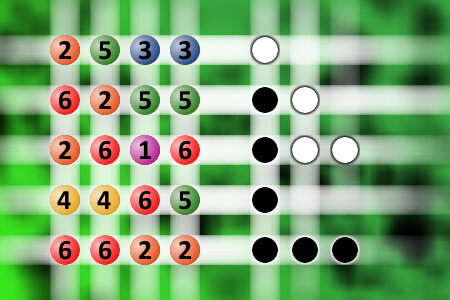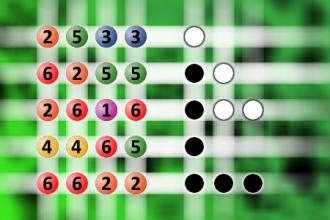What a winning combination?
The computer chose a secret code (sequence of 4 digits from 1 to 6). Your goal is to find that code. Black circles indicate the number of hits on the right spot. White circles indicate the number of hits on the wrong spot.Correct answers: 37
The first user who solved this task is Nílton Corrêa De Sousa.
#brainteasers #mastermind

Tell The Whole Truth
Mr. Dewey was briefing his client, who was about to testify in his own defense.
"You must swear to tell the complete truth. Do you understand?"
The client replied that he did.
Then lawyer then asked, "Do you know what will happen if you don't tell the truth?"
The client looked back and said, "I imagine that our side will win."
"You must swear to tell the complete truth. Do you understand?"
The client replied that he did.
Then lawyer then asked, "Do you know what will happen if you don't tell the truth?"
The client looked back and said, "I imagine that our side will win."

